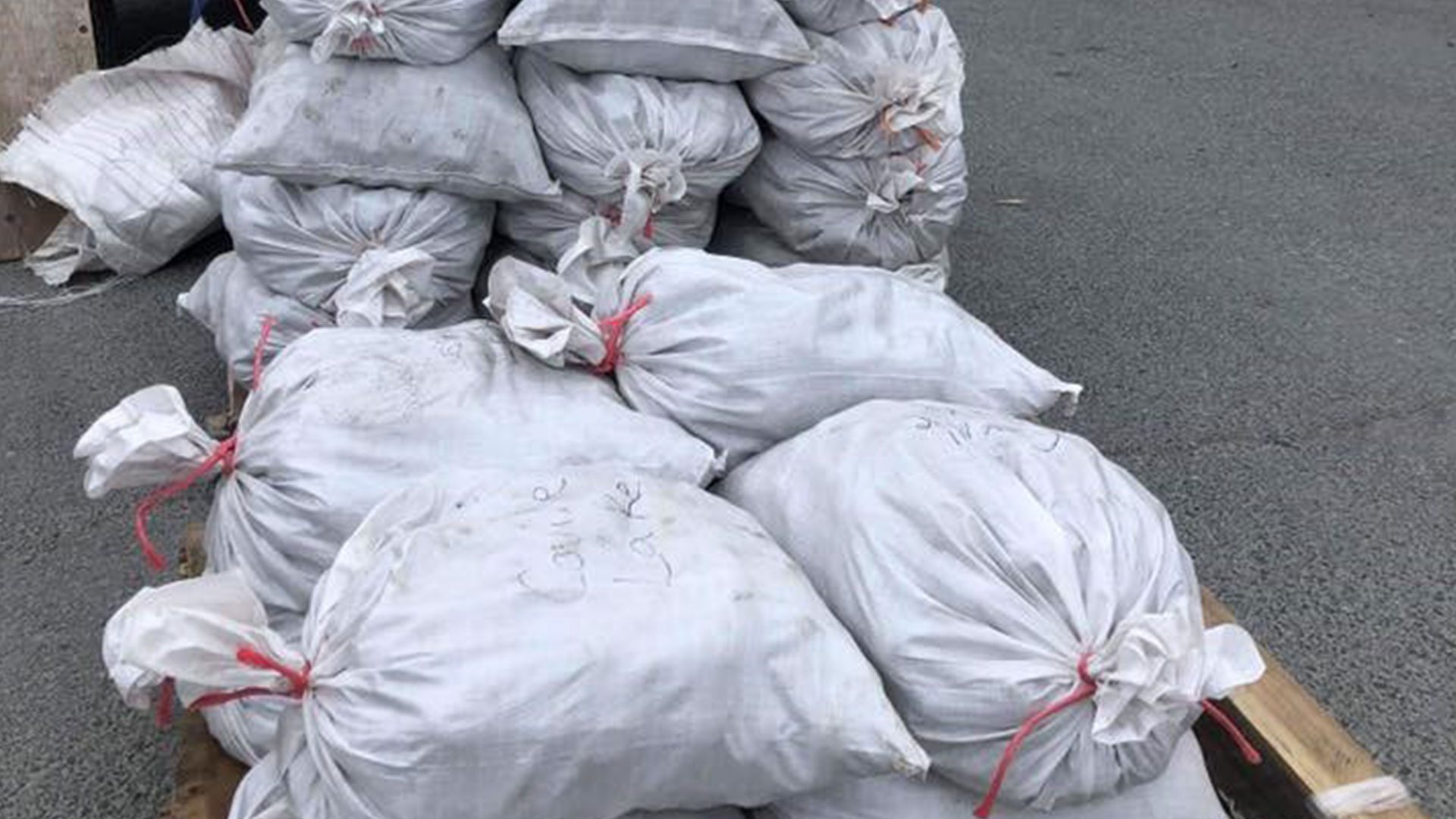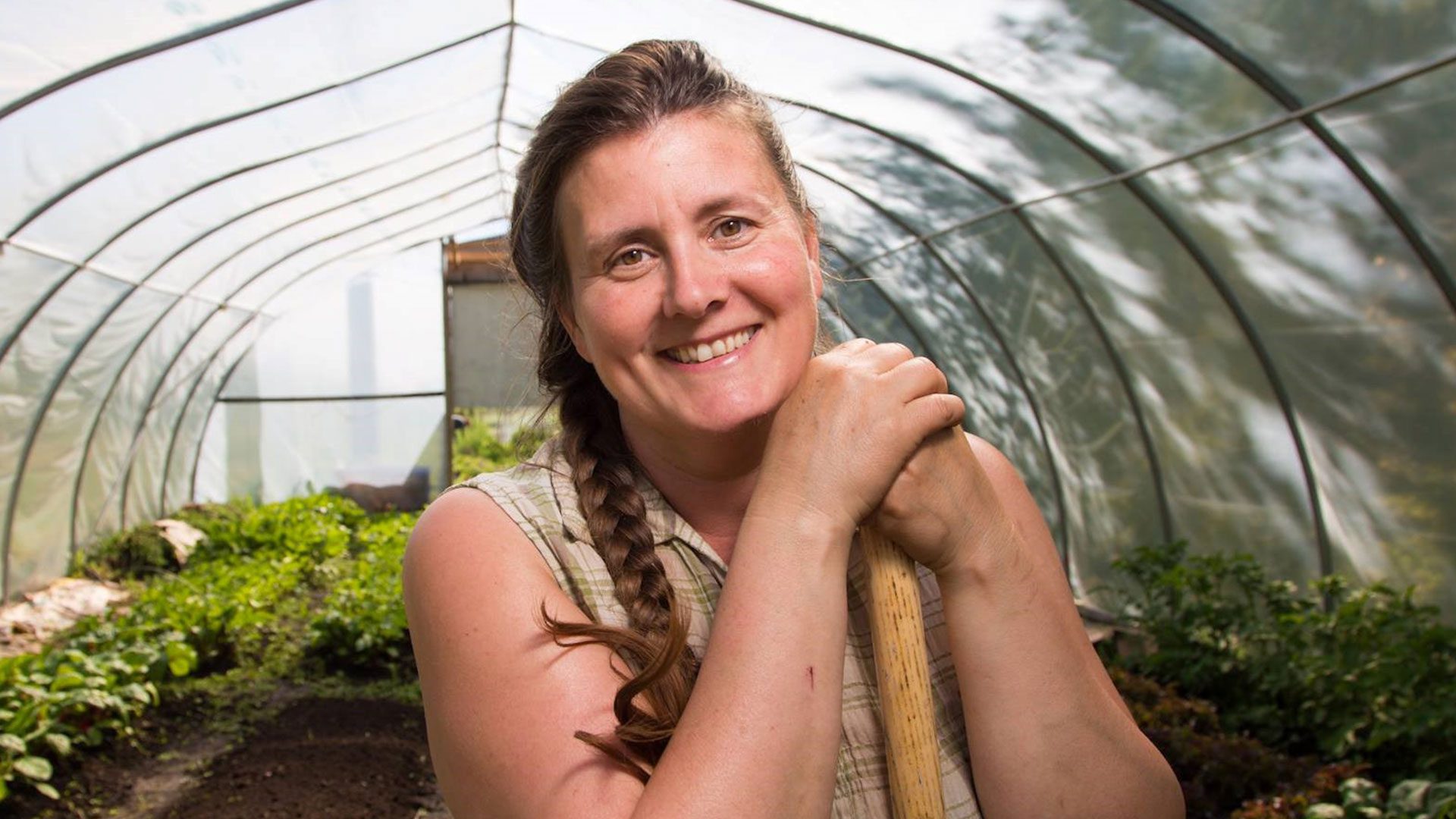In a brisk walk, Jackie Milne buzzes past hearty tomato plants sitting on beds made from recycled box board.
There’s no supplementary heat in the greenhouse, but under the care of green-thumbed volunteers, the midnight sun crops have already yielded a few harvests this spring.
Milne says she doesn’t believe the majority of Canadians know what it takes to feed themselves; but they should.
She says everyone, including residents in the harshest northern conditions is capable of learning.
“A lot of the food feeding us is from last year. That’s why this year during COVID-19 really matters to learn to grow or start growing again if you have experience,” Milne says.
Milne has dedicated the last seven years strategizing how the north could weather food shortages if supply chains were cut off from the south.
Passionate about food security and sustainability, Milne has trained hundreds on sustainable agricultural at the Northern Farming Training Institute, (NIFTY) a not-for-profit campus just outside of Hay River, Northwest Territories.
“Everything that grows down south can grow up here because of the extra-long daylight hours,” she says. “If you add the extra hours of daylight it is equal to an extra 30 days of growing frost free.”

When the COVID-19 pandemic hit in March, Milne saw a rise in northerners interested in growing their own food, but unable to purchase seeds that had sold out.
She wrote a proposal to the territorial government asking them to fund a seed bank for high quantity vegetables grown in a cooler climate. Seeds such as potato, leek, onion, parsnip, beet, carrot, radish, salsify and rutabaga to name a few.
“I did say that seeds would become the new toilet paper. To have security we need diversity, this includes seeds that are short season producing, are storable or can be dehydrated. They can contribute, what I was recommending was a target of 25 per cent of our food needs,” she said.
According to Milne’s calculations, $100,000 invested in seeds would cover 25 per cent of the caloric needs of N.W.T. residents.
APTN News reached out to the GNWT Department of Industry, Tourism and Investment to inquiry on the status of Milne’s proposal, but did not receive a comment back by the time of publication.
Neither did Milne, so she took matters into her own hands to provide seed potatoes to every community in the NWT this year.

Milne reached out to the Alberta Potato Farmer’s Association, and her wishes were granted to the tune of 25 tons of seed potatoes donated and delivered to NIFTY.
It’s enough to feed every person in the territory, and Milne leaned on her connections made from teaching to collaborate with Indigenous governments from the South Slave to the High Arctic region of the N.W.T.
Angus Charlo, an Dechinta Naowo instructor with the Yellowknives Dene First Nation, eagerly packed up six large barrels with 680 kilograms worth of seed potatoes as soon as the spuds were delivered to Yellowknife.
He laughs when he’s asked what pairs best with the spuds.
“Moose meat with pan fried potatoes, just slices, don’t even need to slice it,” he says.

Those potatoes will be planted in 12 community garden plots and will feed nearly 20 families.
“It’s beautiful, really happy we got all this. It teaches and benefits everyone, and families all get together especially for the harvest in the fall time,” Carlo said.
According to the latest N.W.T bureau of statistics, more than 23 per cent of households in the territory struggle to pay for groceries. Access to fresh produce in fly-in communities is tricky when it can take up to four weeks from the time a vegetable is harvested to the time it reaches the grocery store.
APTN visited NIFTY in the spring of 2017, just as the territorial government had launched the first-ever agricultural strategy.
According to the Department of Industry, Tourism and Investment’s website, the NWT is home to 32 community gardens and 25 community greenhouses.

But it’s not just the general public Milne is teaching to produce.
She noted the paradigm of government’s approach to agriculture has often focused on a business model approach rather than growing for personal consumption.
“Big farms to produce food, but in the north we do not have titled pieces of land for that to exist and that doesn’t not solve food security,” she says.
“I have presented many times urban agriculture models developed in Canada. Small acre farms producing huge quantities of food.”
Read More:
Program in NWT hopes to produce the next crop of farmers
Hydroponic garden company starts producing leafy greens in Norway House
A local Métis herself, Milne says the principles of harvesting food, whether traditional or domestic, have deep Indigenous roots.
Last year, after a 100 year wait, members of the K’atl’odeeche First Nation, located beside Hay River, finally had treaty rights recognized by the federal government
The $28.3-million ‘cows and plows’ settlement was reached in July 2019, to address the unfulfilled promises made by the feds to provide “cows and plows” to signatories who wanted to take up farming in Treaty 8.
When it comes to writing history for the next 100 years, Milne hopes that farming strategies will come from the ground up to suit the unique demographic and geographic needs of the 33 communities
“We need to take the most sustainable practices we know of and then bring a combination that fits our locale. Maybe it would just be a few crops to intergrade with our wild harvest and food we buy.”
A small shift that may just start with a seed-potato.










